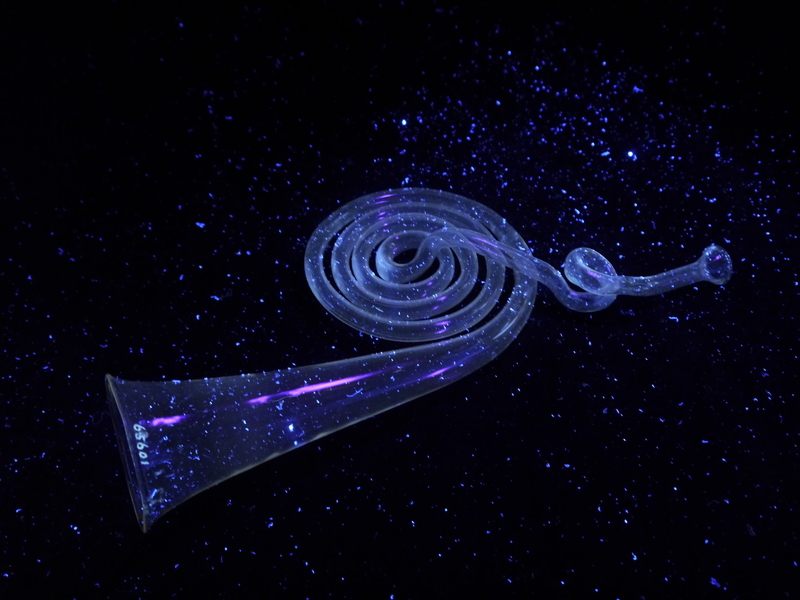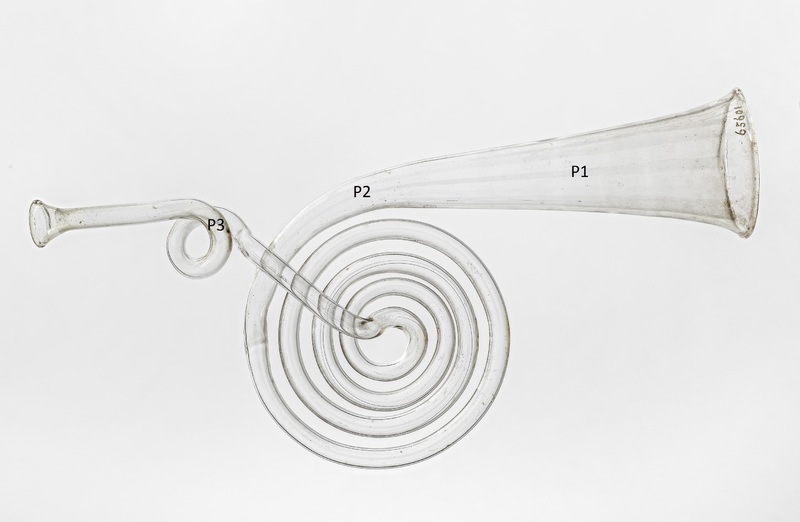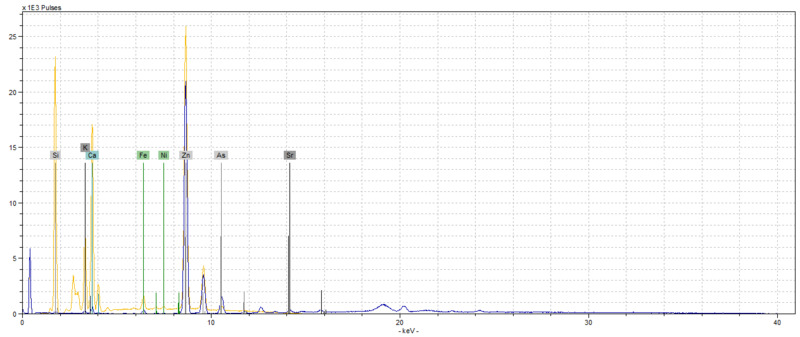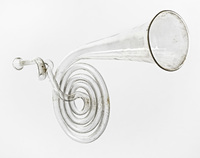Glass trumpet
early 20th century, Inv. No. 65601
UV light fluorescence could be performed on the whole instrument by turning of the light in the room and using a black blanket. The colorless, transparent glass showed a whitish blue fluorescence under the UV light, which is typical for lead oxide in the glass matrix. (Koob 2006, p. 36)
XRF was conducted on three different spots of the trumpet in ambient conditions. The resulting spectra matched clearly, which reflects the homogeneity of the glasses used. Consequently, the interpretation of only one measurement taken from the glass in the instrument (P2) was justifiable.
The qualitative analysis of the glass trumpet showed that a alkali-silica glass was used, which differentiates itself from the other instruments by its very distinct zinc peak. The presence of this element indicates an alkali-borosilicate glass, in which zinc can act as a network modifier (Fabian et al. 2016). However, as mentioned before, boron cannot be verified with XRF spectroscopy. The presence of manganese, that was presumed after the UV-spectroscopy could be confirmed with XRF. No decolorizer, such as manganese was detected, which indicates the use of highly purified ingredients.
From a preservation perspective, the glasses are susceptible to high levels of humidity, because of the potash fluxing agent and also the geometry of the instrument, that allows very little air exchange.
Click here for more information on the glass trumpet.
Citation: Charlotte Holzer, ‘Findings from Non-destructive Material Analysis on Musical Glass Instruments’, in: Materiality of Musical Instruments. A Virtual Exhibition.




